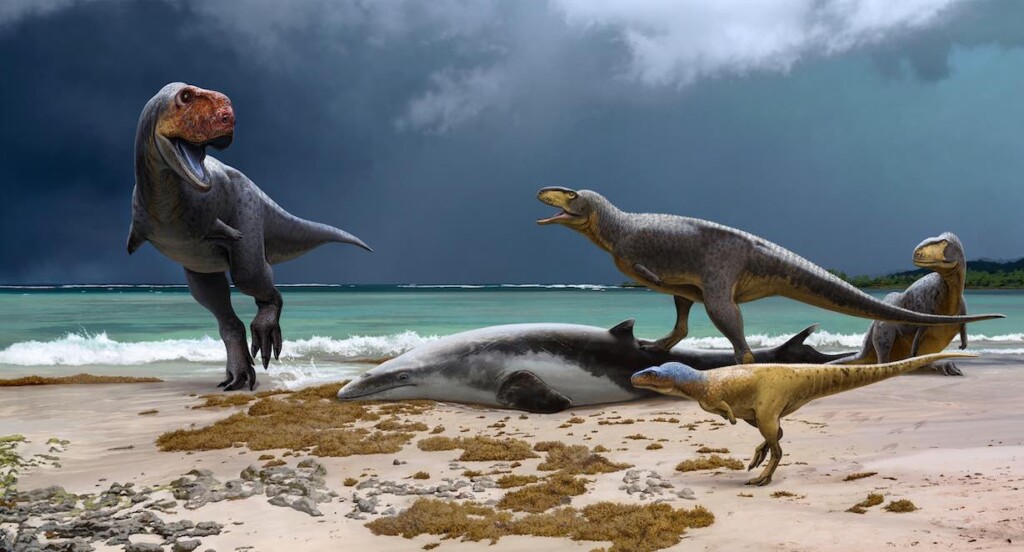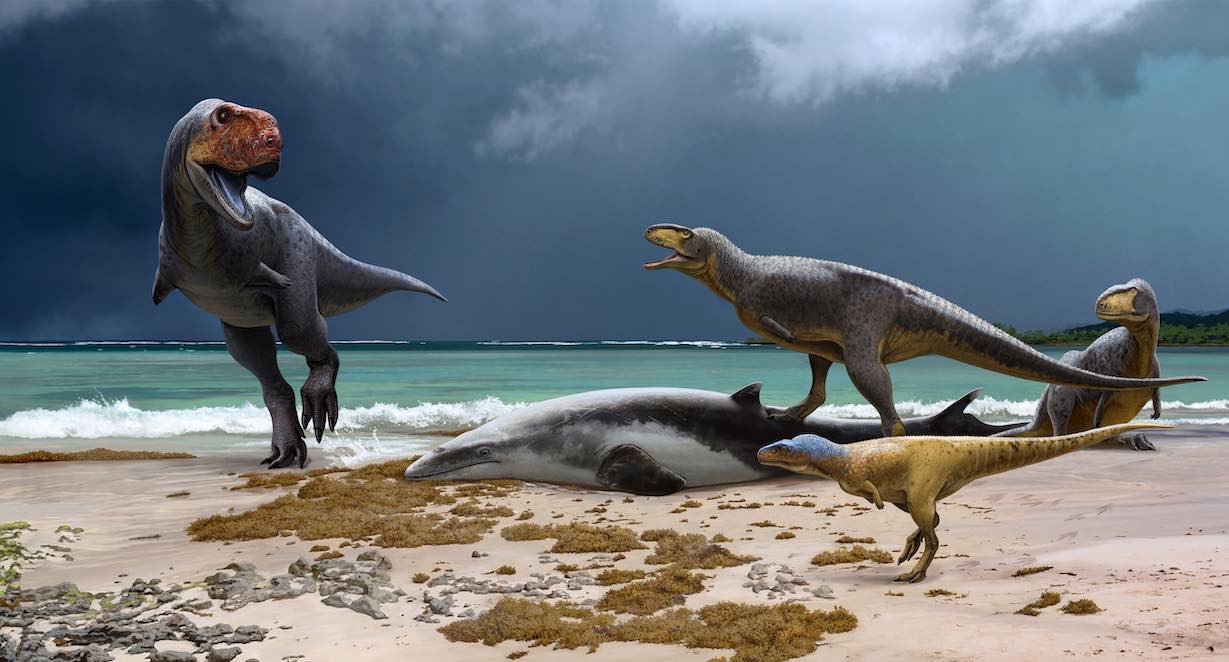
A pair of primitive cousins of T. rex that had short, bulldog-like snouts and even shorter arms have been discovered by scientists in Morocco.
The two new dinosaur species belong to the Abelisauridae, a family of carnivorous dinosaurs that were counterparts to the tyrannosaurs of the Northern Hemisphere.
Living alongside the much larger abelisaur Chenanisaurus barbaricus, the fossils show that Morocco was home to diverse dinosaur species just before a giant asteroid struck the Earth at the end of the Cretaceous, ending the age of dinosaurs 65 million years ago.
The first of the new species was found outside Casablanca near the town of Sidi Daoui. It’s represented by a foot bone from a predator about two and a half meters or eight feet long. The other, from nearby Sidi Chennane, is the shin bone of a carnivore that grew to around twice that length.
“What’s surprising here is that these are marine beds.” said study leader Dr. Nick Longrich, from the Milner Centre for Evolution at the University of Bath. “It’s a shallow, tropical sea full of plesiosaurs, mosasaurs, and sharks. It’s not exactly a place you’d expect to find a lot of dinosaurs. But we’re finding them.”
Morocco as a whole presents an exceptionally clear picture of animal life in the late Cretaceous, and these shallow sea beds host an extremely diverse collection of taxa.
So far, the small number of dinosaur fossils that have been recovered represent five different species—a small duckbill dinosaur named Ajnabia, a long-necked titanosaur, the giant abelisaur Chenanisaurus, and now the two new abelisaurs.
MORE EXCITING DINO NEWS: Fossil Preserves Dinosaur Being Attacked and Eaten by Mammal as Mudslide Entombs them Both
“We have other fossils as well, but they’re currently under study. So we can’t say much about them at the moment,” said Dr. Longrich.
Although it’s been argued that dinosaurs were already in decline before the giant asteroid hit the Yucatan and wiped out about 90% of life on Earth, the Moroccan dinosaurs suggest that they thrived in North Africa up to the very end.
MORE MEMBERS OF THE T-REX CLAN: Frightening Relative of T-Rex is Discovered –And Might be ‘Missing Link’ in Tyrannosaur Evolution
“The end of the Cretaceous in western North America definitely seems to become less diverse at the end,” commented Dr. Longrich. “But that’s just one small part of the world. It’s not clear that you can generalize from the dinosaurs of Wyoming and Montana to the whole world.”
“It also grew colder near the end, so it might not be surprising if dinosaurs at higher latitudes became less diverse. But we don’t know much about dinosaurs from lower latitudes.”
SHARE A Bit Of Science On Social Media With Your Friends…




















